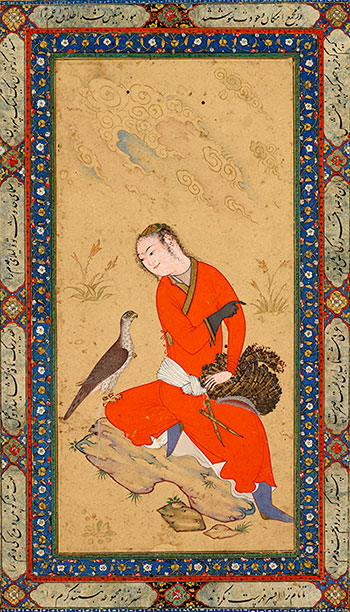
The leaves of a magnificent album compiled for Husain Khan Shamlu, governor of Herat (r. 1598–1618) and one of the most powerful rulers in Persia in the early seventeenth century, are now on view on the Lower Level. Known as muraqqa’s, such albums were assembled by mounting work from various artists, calligraphers, and time periods onto standard-sized sheets, which were then framed with highly ornamented paper.
During the sixteenth and seventh centuries in Safavid Iran, innovative painters began to move away from the traditional format of illuminated manuscripts toward single-page compositions created specifically for albums. Particularly popular were paintings of idealized youths, usually depicted as languorous, carefree, and elegantly dressed. As embodiments of beauty and objects of desire, these youths evoke the rapturous descriptions of the beloved that were a favorite subject of lyric poets at the time.
Ḥabīb-Allāh al-Mashhadī (fl. 1595–1610), A Seated Youth with His Falcon, A Leaf from the Read Persian Album, Herat (present-day Afghanistan), ca. 1600. The Morgan Library & Museum, MS M.386.1r. Purchased by Pierpont Morgan from Charles Hercules Read, 1911.
